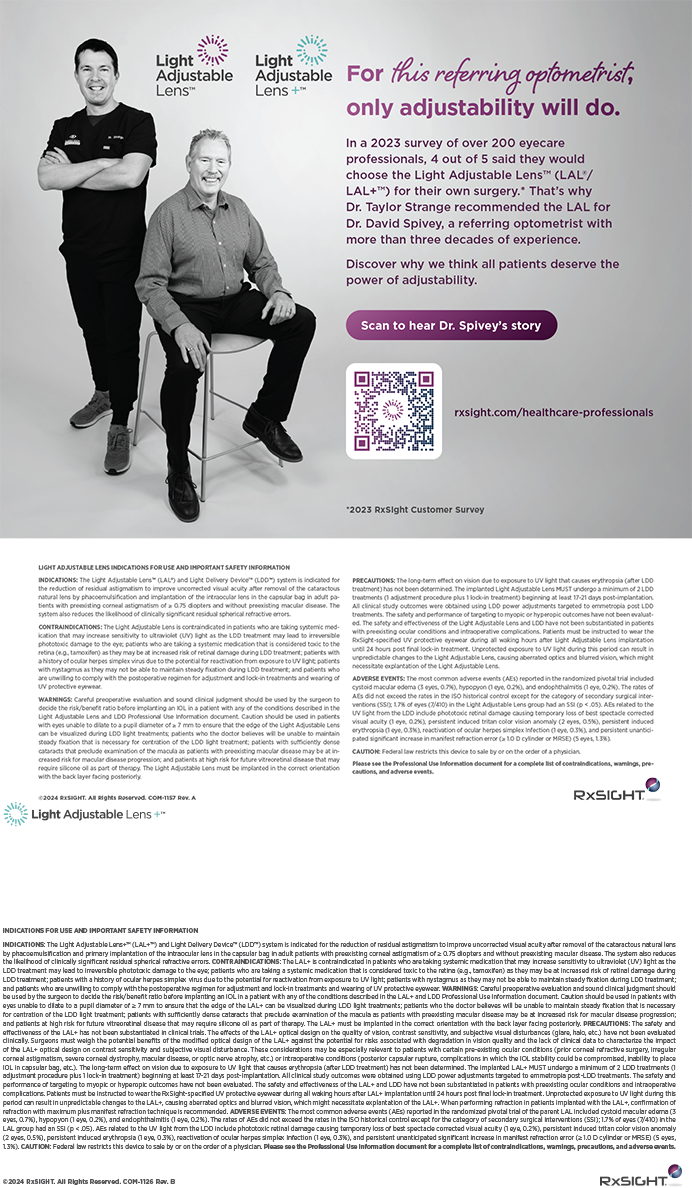Sandy T. Feldman, MD, MS: Why don’t companies educate consumers through advertising? It would be easier for patients to make decisions about having premium lenses if they had already heard about them or knew a friend who had them.
Since this information is new to many patients, a lot of education is done by physicians and their staff. If the consumer already knows that IOLs that enable better distance and near UCVA are available, that might drive the market, as the physician and their staff are recommending something that is already familiar. Today’s lenses are different than prior generations of implants.
J. Andy Corley: When you advertise to the general public and only a segment of the channel is available to deliver the service you are promoting, it’s not a good investment. We tried it with the Crystalens (Bausch + Lomb) with mixed results.
Feldman: But advertising has changed, and targeting has changed with digital media. There are ways to drive things digitally. Additionally, the lenses have changed, and they deliver better results than prior generations of lenses.
Stephen G. Slade, MD, FACS: Is any lens company currently doing direct-to-consumer marketing, digitally or through traditional marketing, to educate patients about these technologies?
Brian O’Neal: Alcon is doing direct-to-consumer marketing. About 1 year ago, we launched the website MyCataracts.com. It is completely unbranded and has no specific lens types mentioned. It is a significant digital effort; it is 100% digital with mostly paid search. You are right: Online is exactly where these patients or caregivers are today.
Steven J. Dell, MD: That is to be applauded, and it is an excellent thing that you are doing. The challenge associated with it is that we have got all of these cataract surgeons in the United States, but how many are regularly offering presbyopia-correcting IOLs?
O’Neal: It is about 1,500 to 1,600 (data on file with Alcon).
Dell: That is the number who are offering it, but the number who are actually doing more than a couple of presbyopia-correcting IOLs a month is shockingly small; it is probably in the range of 300 to 400. The problem is that you are broadcasting premium IOLs to these patients through targeted search information, and that patient may wind up in a surgeon’s office who is not going to close the loop and seal the deal.
O’Neal: You are right. As Mr. Corley stated, that has been the issue for a long time. You can educate the patient and drive them into the office, but are they going to the right place? That is a difficult thing to control.







